The Portland Vase is a Roman two-handled glass amphora dating to between the second half of the 1st century BCE and the early 1st century CE. The vase has a cameo-like effect decoration which perhaps depicts the marriage of Peleus and Thetis from Greek Mythology. After a long history of changes in ownership, disaster struck in 1845 CE when the vase was smashed to pieces in the British Museum. Fortunately, it has since been painstakingly restored so that it can once more take its rightful place amongst the very finest masterpieces of Roman art.
Properties
The vase is 24.5 cm in height and 17.7 cm in its maximum width. The vase was made by blowing the dark cobalt blue coloured glass covered with a layer of opaque white cased glass. Large areas of the white glass were then removed to reveal the under-layer of blue. Areas of white were left and carved in relief to depict scenes. The style of the decoration has led scholars to date the piece to the reign of Augustus (27 BCE - 14 CE). The fineness of detail of the decorative scenes is comparable to the highest quality Roman cut-gems and so it must be the work of a superbly talented gem-cutter or diatretarius.
The two-handled amphora vase is incomplete as it has lost its pointed base and the mouth of the vessel is curiously uneven in cut. The base was repaired using a similar coloured disk carved in the same style and depicting Paris. Although it is remarkable that such a delicate object has survived at all from antiquity, the vase is not unique, as a similar type vase has been found at Pompeii which dates to the mid-1st century CE and depicts scenes from a grape harvest. However, these cameo-cut vessels are regarded as something of an experiment in Roman glassware, carried out in a limited period spanning just two generations, so they were almost certainly not commonly produced.
Decorative Scenes
The scenes on the vase are divided into two parts by a bearded head (perhaps with horns), one under each handle. The first scene has four figures which include a young man leaving a shrine in the countryside and wearing a cloak. The man holds the arm of a semi-naked woman sitting on the ground preoccupied with stroking an animal resembling a snake. Above the woman is the flying figure of Eros with his customary bow and a torch in his right hand. On the right is a bearded male standing between two trees and depicted in a contemplative mood with his chin resting on his hand.
The second scene on the other side of the vase shows three figures all sitting on rocks with a background of a single tree. On the left is a young male next to a column or pillar, whilst in the centre is a young woman with her arm raised to her head and holding a torch which hangs down to the ground. On the far right is another half-dressed woman who holds a sceptre or staff in her left hand.
![Portland Vase [Reverse Detail]](https://www.worldhistory.org/img/r/p/500x600/2299.jpg?v=1600898403)
The exact significance of the scenes is not known for certain, but a commonly held speculation is that it is the wedding of Thetis and Peleus from Greek mythology that is being shown. Other interpretations include the dreams of Olympias, Alexander the Great's mother. This would make the reclining female figures in both scenes Olympias, the snake Alexander's father Zeus, and the young male leaving the temple as Alexander. Another interpretation is the similar story of Julia Mammaea and Roman emperor Alexander Severus. Finally, some have suggested the scene with Eros shows Mark Antony and Cleopatra, whilst the reverse scene has Augustus consoling Octavia with the goddess Venus looking on.
Later History
The vase was discovered in a funerary monument in Rome in the 16th century CE and was initially believed to have come from a marble sarcophagus containing the remains of Alexander Severus - a claim now considered erroneous. The vase has almost certainly been polished since its original discovery and the scenes perhaps even reworked. After changing owners several times - amongst them the Barberini family whose name became attached to the vase - it was acquired by the Duchess of Portland in 1784 CE, a noted collector of antiquities. The vase has always been famous, but it became even more so from 1786 CE when Josiah Wedgwood made several copies of it in black and then lighter blue jasper-ware. In 1810 CE the 4th Duke of Portland loaned the vase to the British Museum in London for permanent exhibition.
Seemingly now safe for all time, the Portland Vase was, however, to suffer one final twist of fate when in 1845 CE a drunken paranoia-suffering visitor to the museum inexplicably took a sculpted stone exhibit and threw it at the glass cabinet containing the vase. The vessel was smashed into well over 80 pieces. An immediate restoration was undertaken by John Doubleday and the incident served only to increase the vase's already considerable mystique and fame. The British Museum bought the vase outright in 1945 CE and it has since been dismantled and restored a further two times, the last in 1989 CE.
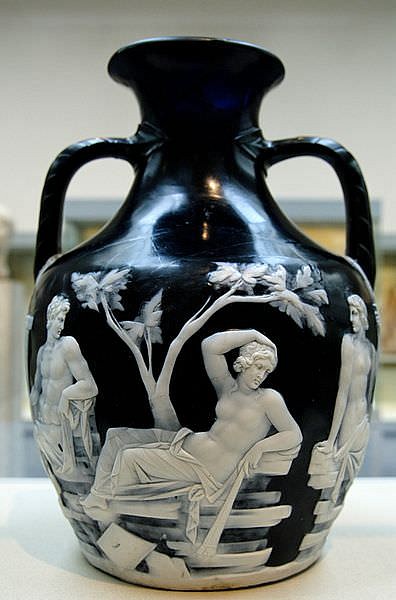
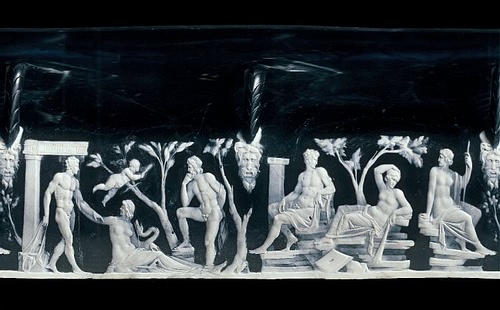
![Portland Vase [Detail]](https://www.worldhistory.org/img/r/p/500x600/2298.jpg?v=1600898403)
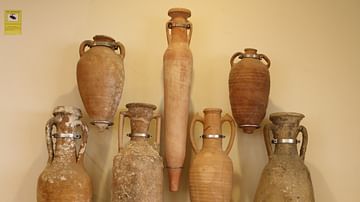
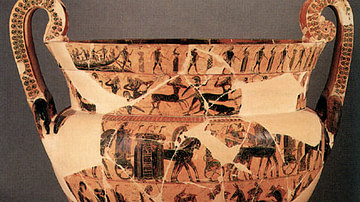
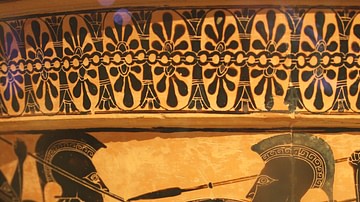
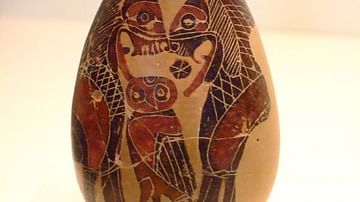
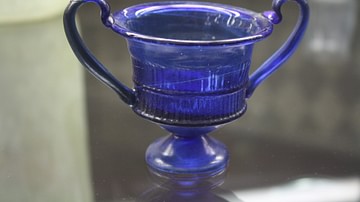
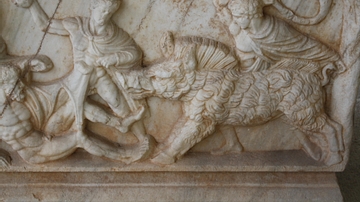

![Account of the Barberini, Now Portland, Vase; With the Various Explication[sic] of Its Bas Reliefs That Have Been Given by Different Authors.](https://m.media-amazon.com/images/I/51g9yaDCOoL._SL160_.jpg)


